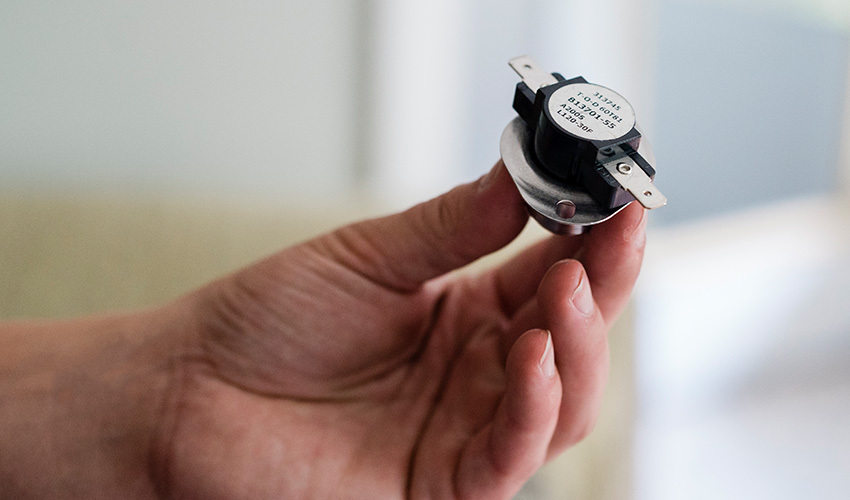What Is a Furnace Limit Switch and Why Is It Important?

Do you really know how your furnace works? Inside that heat-producing appliance are a lot of vital components. One is the furnace limit switch, also known as a furnace high limit switch and furnace fan limit switch, and without this essential part, your furnace could put your family in harm's way.
Do you know what this small part does? Keep reading to find out.
What Is a Furnace Limit Switch and What Does It Do?
A furnace limit switch is a component of a forced-air furnace that is responsible for turning on the furnace blower once the desired heat has been met inside the furnace. Without a functioning furnace limit switch, a furnace would not be able to regulate the temperature in conjunction with a thermostat. Typically, a furnace limit switch consists of an exterior plate and a temperature probe that lives inside the furnace housing.
How Does A Furnace High Limit Switch Regulate Temperature?
When the heat is turned on or up, a signal is sent from the thermostat to the furnace, turning on the unit. Once the furnace heats up, the furnace limit switch closes, connecting the circuit and turning on the blowers. Once the home or business reaches the desired temperature, the furnace burners will shut off—but the blower will keep running until the temperature inside the furnace decreases to the lower limit (the coolest air temperature permitted as set by the thermostat).
Depending on the air temperature inside the home, the unit will cycle and re-start or stay off for an extended period. The furnace high limit switch helps to increase furnace efficiency.
As the home cools, the thermostat sends a signal back to the furnace to kick on, initiating the cycle once more.
Furnace Limit Switch: A Little-Known Safety Feature
A furnace limit switch isn’t just important to the cycling of your furnace it also will shut off the furnace blowers and burners if the unit overheats. An overheated furnace is a safety risk that can lead to serious furnace damage.
It's important for homeowners to know that furnace overheating most often occurs when the blower fan malfunctions and fails to operate, or when a furnace filter is excessively dirty, causing the unit to strain and overwork. Homeowners should not rely on their furnace limit switch to prevent damage and overheating but instead should take an active role in maintaining their HVAC system with regular furnace maintenance and air filter replacement.
Furnace High Limit Switch vs. Furnace Pressure Switch
Furnace limit switches may be mistaken for furnace pressure switches, but the two are not interchangeable. Equally important, a furnace pressure switch, located inside a furnace motor compartment, is designed to detect negative pressure inside the unit and, when detected, shut the furnace down. Furnace limit switches are similar but different in that they are more visible to homeowners and deal primarily with temperature control.
How Do I Know If My Furnace Limit Switch Is Broken?
Most homeowners haven’t heard of a furnace limit switch because, if it works properly, you wouldn’t know it was there. Homeowners should have their furnace limit switch inspected if:
- The furnace fan runs non-stop.
- The furnace fan refuses to turn on.
Can I Repair My Own Furnace High Limit Switch?
Yes, but it is not recommended. While this task may seem simple to an experienced HVAC technician or electrician, it is often daunting to a homeowner. Improperly completed furnace repairs may leave your property vulnerable to fire, carbon monoxide leaks, and more.
Considering the cost of a new HVAC unit and the potential health and safety risks, we recommend property owners engage in professional service if they suspect a problem with their furnace limit switch.
Breathe Easy with Professional Furnace Limit Switch Service
Is your furnace on the fritz? Our expert HVAC service professionals are ready to help. Request an appointment online or call (855) 512-2886 to get started.
 Click to call
Click to call


